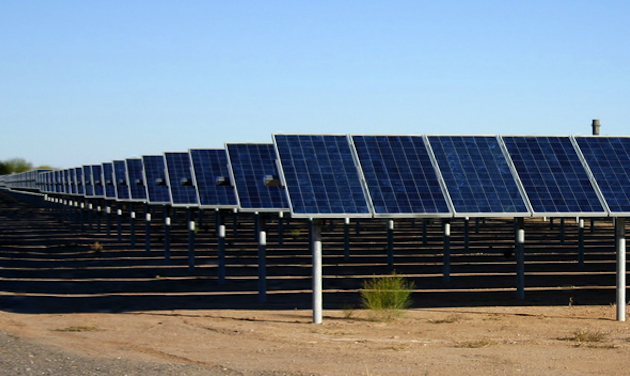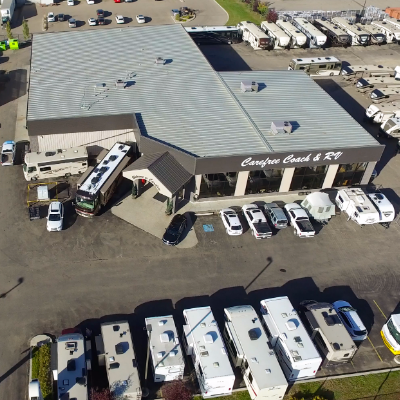Harvesting the Arizona sun
Where better than Arizona to build a sun collection farm?

As usual, we tried to find a different road to take us from where we were to where we wanted to be. Coming out of the city of Casa Grande, we took a new route that mostly took us in the direction of the RV park. We discovered businesses and factories we never knew existed and we finally found out that the building that stuck up from the flat Casa Grande horizon was an Abbott Pharmaceutical facility where they make products like Ensure. Beyond Abbott’s is a Frito Lay complex that seemed to go on for miles.
Frito Lay goes green
On the other side of the Frito Lay buildings, there were rows and rows of solar panels. A high chain-link fence protected them from wandering explorers like ourselves.
I never thought of Arizona as being particularly environmentally friendly, so the sight of this solar array surprised me. But it makes sense: Arizona boasts that it is the state with the highest number of sunny days each year and heaven knows there is ample flat desert space to establish a solar farm.
Frito Lay (part of PepsiCo) in Casa Grande has instituted what they call their near net zero vision. They aspire to “be as far off the grid as possible and run primarily on renewable energy sources and recycled water, while producing nearly zero landfill waste.”
Over 18,000 solar panels sit on 36 acres and can produce in excess of 10 million kilowatt-hours of electrical power. These are what they call photovoltaic (PV) systems—meaning that solar radiation is collected through the panels and converted directly into current electricity. Frito Lay’s system is multi-directional, meaning it runs on both dual and single track axes.
We sat and watched all those panels move in unison as they followed the sun across the sky.
According to Frito Lay, they chose the Casa Grande location because it is big enough to be effective and small enough to be manageable. The goal is to use 90 per cent less water, 80 per cent less natural gas and 90 per cent less electricity while keeping 99 per cent of the waste out of the landfill. In Casa Grande, they partner with the local utility, Arizona Public Service. Casa Grande is an environmental learning lab. Thus far, they claim that the Casa Grande facility has achieved 85 per cent reduction in electricity load.
The Agua Caliente Solar Project
Sometimes you just have to take the interstate highway, like Interstate 8 from Casa Grande to Yuma. But this time it turned out okay.
About 65 miles east of Yuma (around Dateland) there is another even more massive array of solar panels. This field is called the Agua Caliente Solar Project and now has the capacity to provide electricity to over 100,000 homes every year. It takes up about 2,400 acres of land in one of the most consistently sunny areas in the U.S.A. and is close to existing electrical transmission lines.
The panels themselves are different from the ones we saw in Casa Grande. They are concave rather than the conventional flat and are considered to be significantly more efficient. According to the Japanese Journal of Physics, a concave panel can generate output with a conversion efficiency of 16.3 per cent while a conventional panel generates an output of about 14.3 per cent.
The project is expected to be completed in 2014, when it will reach a capacity of 397 megawatts and will be enough to service more than 225,000 homes.
Incredible, the things you see and learn along the road!






